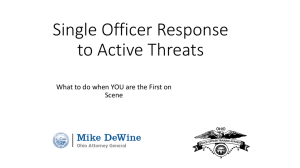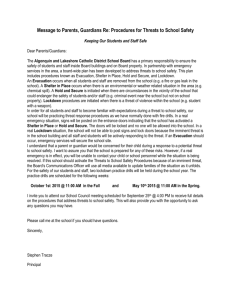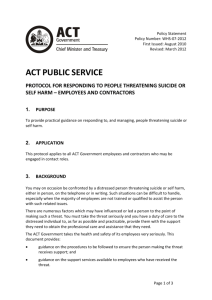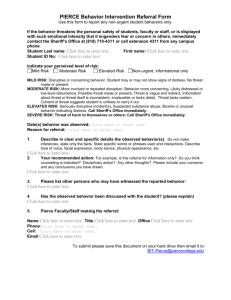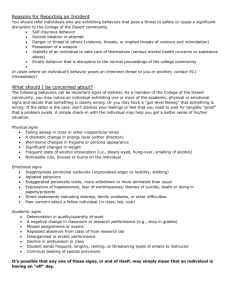Guidelines for Determining Immediate and
advertisement
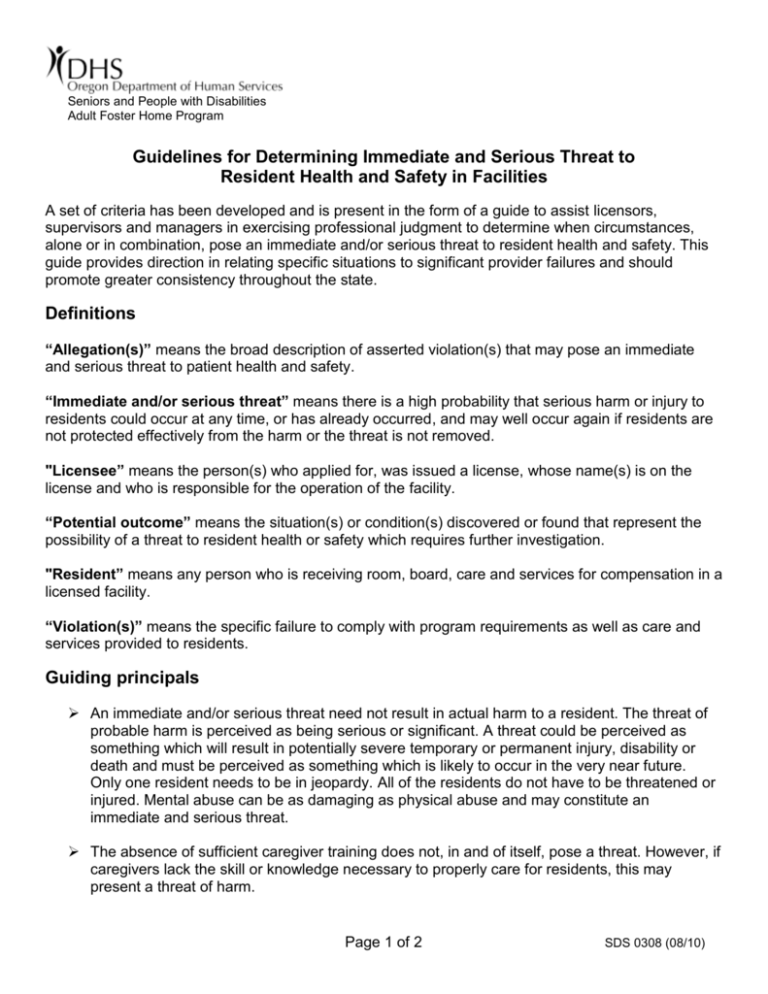
Seniors and People with Disabilities Adult Foster Home Program Guidelines for Determining Immediate and Serious Threat to Resident Health and Safety in Facilities A set of criteria has been developed and is present in the form of a guide to assist licensors, supervisors and managers in exercising professional judgment to determine when circumstances, alone or in combination, pose an immediate and/or serious threat to resident health and safety. This guide provides direction in relating specific situations to significant provider failures and should promote greater consistency throughout the state. Definitions “Allegation(s)” means the broad description of asserted violation(s) that may pose an immediate and serious threat to patient health and safety. “Immediate and/or serious threat” means there is a high probability that serious harm or injury to residents could occur at any time, or has already occurred, and may well occur again if residents are not protected effectively from the harm or the threat is not removed. "Licensee” means the person(s) who applied for, was issued a license, whose name(s) is on the license and who is responsible for the operation of the facility. “Potential outcome” means the situation(s) or condition(s) discovered or found that represent the possibility of a threat to resident health or safety which requires further investigation. "Resident” means any person who is receiving room, board, care and services for compensation in a licensed facility. “Violation(s)” means the specific failure to comply with program requirements as well as care and services provided to residents. Guiding principals An immediate and/or serious threat need not result in actual harm to a resident. The threat of probable harm is perceived as being serious or significant. A threat could be perceived as something which will result in potentially severe temporary or permanent injury, disability or death and must be perceived as something which is likely to occur in the very near future. Only one resident needs to be in jeopardy. All of the residents do not have to be threatened or injured. Mental abuse can be as damaging as physical abuse and may constitute an immediate and serious threat. The absence of sufficient caregiver training does not, in and of itself, pose a threat. However, if caregivers lack the skill or knowledge necessary to properly care for residents, this may present a threat of harm. Page 1 of 2 SDS 0308 (08/10) A violation or allegation may or may not be a threat considering such factors as the season of the year or geographic location. If the situation is severe enough, it may outweigh the potential concerns of moving a resident to another home or facility. Procedures 1. Allegations and violations may represent a situation that warrants further investigation. First determine whether or not the situation is isolated, widespread or ongoing. 2. Consider obstacles that may exist for the licensee to correct the problem and whether or not the licensee will be able to achieve and maintain compliance. 3. Weigh the likelihood and severity of harm to a resident and whether it is likely that harm is imminent or likely to occur again at a later date. 4. Determine the degree of harm that is likely to occur. 5. Is it probable that the threat will result in temporary or permanent injury or death? 6. Finally, consider the history of the licensee. Is this a new or repetitive and persistent violation? Has the licensee demonstrated continued noncompliance in general? An accumulation of repeated violations may pose an immediate and/or serious threat to residents and may warrant immediate action. Suspension of a license to operate a facility Suspension of a license will be taken if one of the following has been determined: 1. An imminent and/or serious threat of harm (abuse, neglect or exploitation) has occurred or is likely to occur at a later date. 2. Licensee has made no effort to correct the violation(s), therefore probability of imminent and/or serious harm continues. 3. Licensee has made effort, however, the time needed for correction allows for probability of imminent and/or serious harm. 4. Licensee has made effort, however, the violations have persisted for a significant amount of time indicating the licensee is unwilling or unable to make permanent correction of the violation. Therefore the probability of imminent and/or serious harm continues. Inform the licensee of the situation(s) determined to pose an imminent and/or serious threat to the health and/or safety of the residents. If the licensee can correct the situation without delay, immediate suspension of the license may not be necessary. This does not preclude the department from issuing a suspension or other corrective action at a later time. Upon discovery of imminent and/or serious threat to resident health and/or safety, the licensor and his/her supervisor and/or manager must contact the relevant facility program coordinators in Central Office. Complete the Rose form (SDS 307) and submit to Central Office. Once the information has been reviewed, Central Office will conduct a telephone conference with the local office for follow-up questions and documentation. A joint decision will be made on a course of action to be taken. If additional information is obtained after a plan is developed, both offices will review the information and discuss any potential changes to the original plan. Regular communication between the local office and Central Office is essential to ensure proper steps are taken to minimize any additional risk to residents and ensure legal sufficiency is maintained throughout the process. Page 2 of 2 SDS 0308 (08/10)



